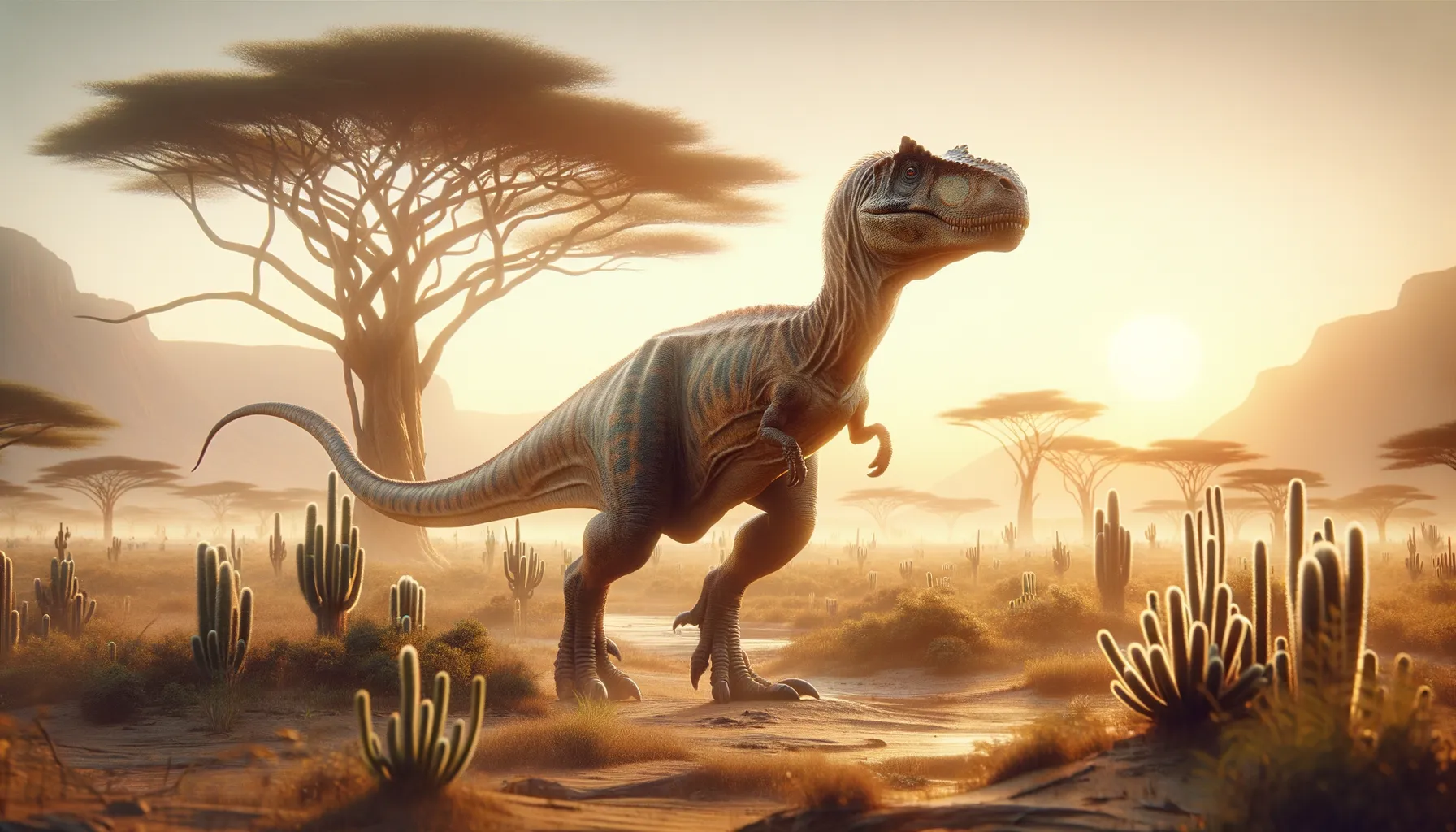
Elrhazosaurus
Swift herbivore of the ancient African plains.
Period
Cretaceous
Length
Around 10 to 13 feet long.
Height
About 3 feet at the hips.
Weight
Approximately 150 to 200 pounds.
Elrhazosaurus was a small herbivorous dinosaur that roamed the Earth during the Cretaceous period. Its name reflects the region where its fossils were first found, giving insight into the diverse dinosaur fauna of Africa. With a lean body built for speed and agility, it likely fed on low-growing vegetation. Despite its modest size, Elrhazosaurus plays a crucial role in understanding the ecological dynamics of its time.
Diet
Elrhazosaurus was herbivorous, feeding primarily on low-lying plants. Its diet likely consisted of ferns and other leafy greens. It would have foraged in groups to find sufficient food.
Hunting
As a herbivore, Elrhazosaurus did not hunt. Instead, it spent much of its day grazing. Its foraging behavior involved moving in herds to protect against predators.
Environmental challenges
Living in a semi-arid environment, Elrhazosaurus faced challenges such as drying seasons and scarcity of water. These conditions would have required it to migrate or adapt seasonally for survival. Competition for limited resources with other herbivores was another significant challenge. It also had to be vigilant against predatory dinosaurs that roamed its habitat.
Speed
Moderate, suitable for a small ornithopod.
Lifespan
Estimated to be around 20-30 years.
First discovery
Discovered in 1973 in Niger's Elrhaz Formation.
Fun Facts
- Elrhazosaurus was a small herbivorous dinosaur that lived about 110 million years ago during the Early Cretaceous period.
- Its name means 'Lizard from Elrhaz', named after the Elrhaz Formation in Niger where it was discovered.
- Elrhazosaurus was part of a group known as ornithopods, which are known for being agile and fast-moving dinosaurs.
- This dinosaur walked on two legs and had a long tail, which likely helped it balance while running.
- Elrhazosaurus was a part of the diverse ecosystem of Africa during the Cretaceous period, coexisting with various large predators.
- It had a beak-like mouth that was perfect for clipping plants, making it well-suited for a plant-based diet.
Growth and Development
Elrhazosaurus grew relatively quickly, reaching full size in just a few years. It likely had growth spurts during wetter seasons when food was abundant. Its development was characterized by toughness, allowing it to cope with harsh environmental factors. Juveniles would have stayed close to adults for protection as they matured.
Habitat
Elrhazosaurus lived in what is now the Sahara Desert, which, during its time, was a much greener landscape. Its habitat ranged from open floodplains to forested areas near riverbanks. Seasonal changes in the environment would necessitate migrations. These diverse habitats provided both food resources and refuge from predators.
Interaction with other species
Elrhazosaurus shared its environment with a variety of other dinosaur species. It likely had a peaceful coexistence with other herbivorous dinosaurs, feeding on different plant layers. Predatory dinosaurs in its habitat posed a constant threat, influencing its social behaviors and foraging patterns. Occasional competition with similarly sized herbivores could lead to skirmishes over resources.
Natural lifespan
Elrhazosaurus typically lived for around 20 to 30 years in the wild.
Reproduction
Elrhazosaurus likely laid eggs, as is common with most dinosaurs. Nesting sites would have been selected for proximity to food sources and safety. Parental care might have been minimal, with hatchlings quickly joining herds. Seasonal mating would ensure offspring arrived during optimal resource availability.
Social behaviour
Elrhazosaurus likely lived in groups or small herds to deter predators. Social interactions within these groups would include communication to alert others of nearby threats. These herds not only provided safety but were critical in finding food. Hierarchical order might have existed based on size and age.
Fossil locations
Elrhazosaurus fossils have been primarily found in Niger, providing insight into the dinosaur diversity of Africa. These discoveries are confined to the Elrhaz Formation, known for its rich paleontological significance. Fossil evidence supports the idea that Elrhazosaurus was widespread during its time. The Elrhaz Formation continues to be an important site for uncovering dinosaur history.
